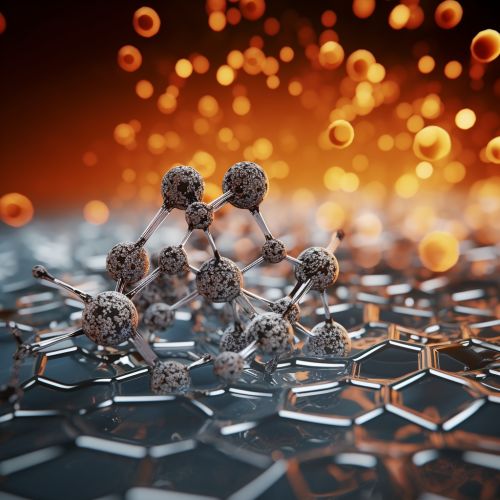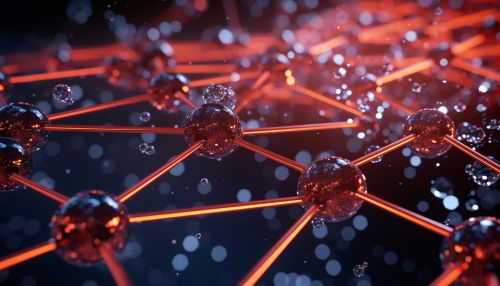Catalysis
Introduction
Catalysis is a process that involves the acceleration of a chemical reaction by a catalyst. A catalyst is a substance that can increase the rate of a reaction without being consumed in the process. This is different from other reactants, which are consumed in the reaction and are transformed into products. Catalysts can be either solids, liquids, or gases and can function in a single phase or in multiple phases.


Types of Catalysis
Catalysis can be broadly divided into two types: homogeneous catalysis and heterogeneous catalysis.
Homogeneous Catalysis
In homogeneous catalysis, the catalyst and the reactants are in the same phase, usually in a liquid solution. The catalyst, reactants, and products are freely mixed and can interact without any phase boundaries. This type of catalysis is common in many industrial processes, including the production of polymers and pharmaceuticals.
Heterogeneous Catalysis
In heterogeneous catalysis, the catalyst and the reactants are in different phases. The catalyst is usually a solid, while the reactants are either in the gas phase or in solution. The reaction occurs at the interface between the solid and the other phase. This type of catalysis is common in many industrial processes, including the production of ammonia and the refining of petroleum.
Mechanism of Catalysis
The mechanism of catalysis involves several steps. These include the adsorption of the reactants onto the catalyst surface, the reaction on the catalyst surface, and the desorption of the products from the catalyst surface.
Adsorption
Adsorption is the process by which molecules of a substance, in this case, the reactants, bind to the surface of another substance, the catalyst. This process is crucial in catalysis as it brings the reactants close to the catalyst and aligns them in a way that facilitates the reaction.
Reaction
Once the reactants are adsorbed onto the catalyst surface, they can react with each other. The catalyst provides a platform where the reactants can come together and react more easily than they would in the bulk phase. This is due to the lower activation energy required for the reaction to occur on the catalyst surface.
Desorption
Desorption is the process by which the products of the reaction are released from the catalyst surface. Once the reaction has taken place, the products are no longer strongly bound to the catalyst surface and can be easily removed. This allows the catalyst to be used again for another reaction cycle.
Applications of Catalysis
Catalysis has a wide range of applications in various fields, including industry, environmental protection, and research.
Industry
In industry, catalysis is used in a wide range of processes, including the production of chemicals, fuels, and pharmaceuticals. For example, the Haber-Bosch process, which is used to produce ammonia from nitrogen and hydrogen, involves the use of an iron catalyst.
Environmental Protection
Catalysis also plays a crucial role in environmental protection. For example, catalytic converters, which are used in vehicles to reduce the emission of harmful gases, use catalysts to convert harmful gases into less harmful substances.
Research
In research, catalysis is a crucial tool in the development of new materials and processes. For example, researchers use catalysis to develop new methods for the synthesis of complex molecules, which can be used in the development of new drugs and materials.
